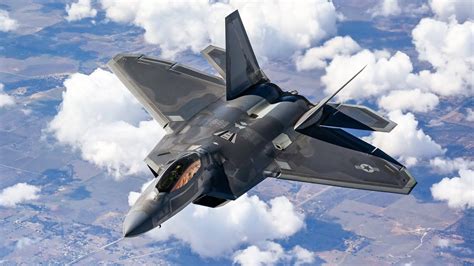Aeronautical Engineer Job Outlook
The field of aeronautical engineering stands as a beacon of innovation, pushing the boundaries of what’s possible in aviation and aerospace. As we look to the skies and beyond, the job outlook for aeronautical engineers reflects a dynamic interplay of technological advancements, global demands, and emerging challenges. This article delves into the current landscape, future projections, and key factors shaping the career trajectory for these professionals.
The Current State of Aeronautical Engineering
Aeronautical engineering, a subset of aerospace engineering, focuses on the design, development, and testing of aircraft and related systems. Today, the industry is experiencing a resurgence driven by several factors:
- Commercial Aviation Growth: The International Air Transport Association (IATA) projects that global air passenger numbers will double to 8.2 billion by 2037. This growth fuels demand for more efficient, sustainable, and technologically advanced aircraft.
- Military and Defense Needs: Governments worldwide are investing in next-generation military aircraft, drones, and missile systems, creating opportunities for engineers specializing in defense applications.
- Space Exploration: The rise of private space companies like SpaceX and Blue Origin has expanded the scope of aeronautical engineering to include spacecraft design and interplanetary missions.
- Sustainability Initiatives: The push for greener aviation, including electric and hybrid-electric aircraft, is driving innovation and creating new roles for engineers focused on reducing carbon emissions.
Expert Insight: "The aviation industry is at a crossroads, with sustainability and technological advancements driving unprecedented demand for skilled aeronautical engineers," says Dr. Emily Carter, Professor of Aerospace Engineering at MIT.
Job Outlook: Trends and Projections
The U.S. Bureau of Labor Statistics (BLS) projects that employment for aerospace engineers will grow by 3% from 2021 to 2031, slightly slower than the average for all occupations. However, this statistic belies the nuanced opportunities within the field. Here’s a breakdown of key trends:
- Regional Variations: Demand is highest in regions with strong aerospace industries, such as the U.S. (California, Texas, Washington), Europe (France, Germany, UK), and Asia (China, India).
- Specialization Matters: Engineers with expertise in emerging areas like unmanned aerial systems (UAS), artificial intelligence (AI), and additive manufacturing are in high demand.
- Public vs. Private Sector: While government agencies and defense contractors remain major employers, private companies like Boeing, Airbus, and SpaceX are increasingly competitive in attracting top talent.
Key Takeaway: While overall growth may appear modest, specialized roles in cutting-edge technologies offer significant opportunities for aeronautical engineers.
Challenges Facing the Industry
Despite the positive outlook, aeronautical engineers face several challenges:
- Regulatory Hurdles: Stringent safety and environmental regulations can slow down innovation and increase development costs.
- Global Competition: Countries like China and India are rapidly expanding their aerospace capabilities, intensifying competition for market share and talent.
- Skill Gaps: The rapid pace of technological change requires engineers to continuously upskill in areas like AI, cybersecurity, and sustainable materials.
Pros: High demand for specialized skills, opportunities in emerging fields like space exploration.
Cons: Regulatory challenges, global competition, and the need for continuous learning.
Educational Pathways and Skill Development
To thrive in this evolving landscape, aspiring aeronautical engineers should focus on:
- Advanced Degrees: A bachelor’s degree is the minimum requirement, but a master’s or Ph.D. can open doors to research and leadership roles.
- Certifications: Licenses such as the Professional Engineer (PE) or certifications in specific technologies (e.g., AI, UAS) enhance employability.
- Hands-On Experience: Internships, co-ops, and projects with industry partners provide practical skills and networking opportunities.
Steps to Success:
- Earn a bachelor’s degree in aeronautical or aerospace engineering.
- Gain practical experience through internships or research projects.
- Pursue advanced degrees or certifications in specialized areas.
- Stay updated on industry trends and emerging technologies.
Future Implications: Where is the Field Headed?
The future of aeronautical engineering is intertwined with broader technological and societal trends:
- Urban Air Mobility (UAM): The development of flying taxis and drones for urban transportation could revolutionize the industry.
- Interplanetary Exploration: Missions to Mars and beyond will require innovative spacecraft designs and life-support systems.
- AI and Automation: AI-driven design tools and autonomous aircraft will reshape how engineers work and what they create.
Future Implications: As the industry evolves, aeronautical engineers will play a pivotal role in addressing global challenges like climate change, urbanization, and space exploration.
FAQs
What is the average salary for an aeronautical engineer?
+In the U.S., the median annual wage for aerospace engineers was $122,270 in May 2022, according to the BLS. Salaries vary based on experience, location, and specialization.
How does aeronautical engineering differ from aerospace engineering?
+Aeronautical engineering focuses on aircraft operating within Earth’s atmosphere, while aerospace engineering encompasses both aircraft and spacecraft.
What skills are most important for aeronautical engineers?
+Critical skills include proficiency in CAD software, knowledge of aerodynamics and materials science, and strong problem-solving abilities. Emerging skills in AI and sustainability are increasingly valuable.
Is aeronautical engineering a good career choice for the future?
+Yes, with advancements in commercial aviation, defense, and space exploration, the field offers stable and rewarding career opportunities, particularly for those with specialized skills.
How can I stay competitive in the aeronautical engineering field?
+Continuous learning, staying updated on industry trends, and gaining experience in emerging technologies like AI and sustainable aviation will keep you competitive.
Conclusion
The job outlook for aeronautical engineers is promising, driven by technological innovation, global demand, and emerging challenges. While the field faces regulatory and competitive pressures, opportunities abound for those with specialized skills and a commitment to lifelong learning. As the industry continues to evolve, aeronautical engineers will remain at the forefront of shaping the future of flight and space exploration. Whether designing the next generation of electric aircraft or pioneering missions to Mars, these professionals are poised to make a lasting impact on humanity’s journey into the skies and beyond.
